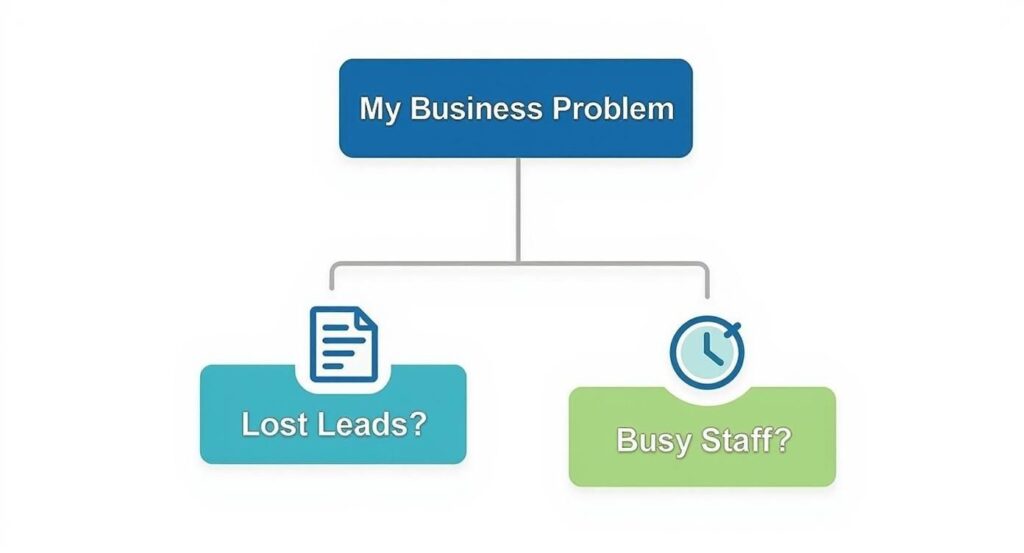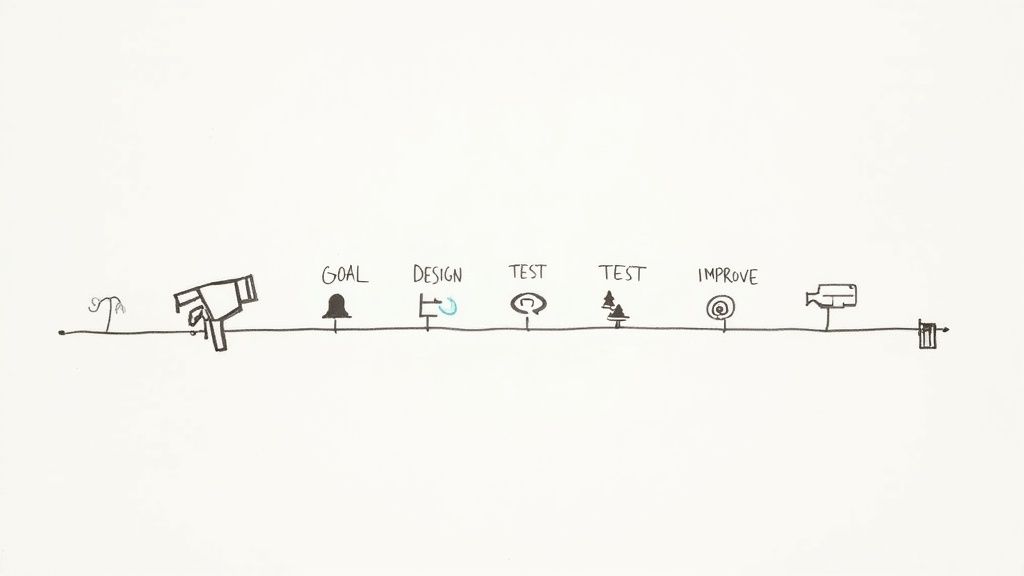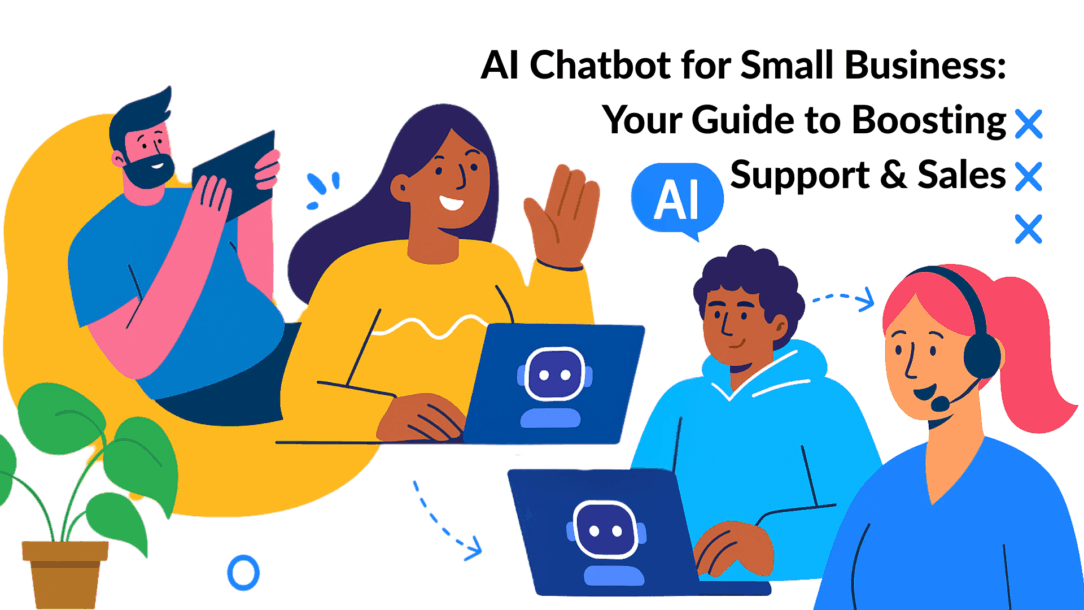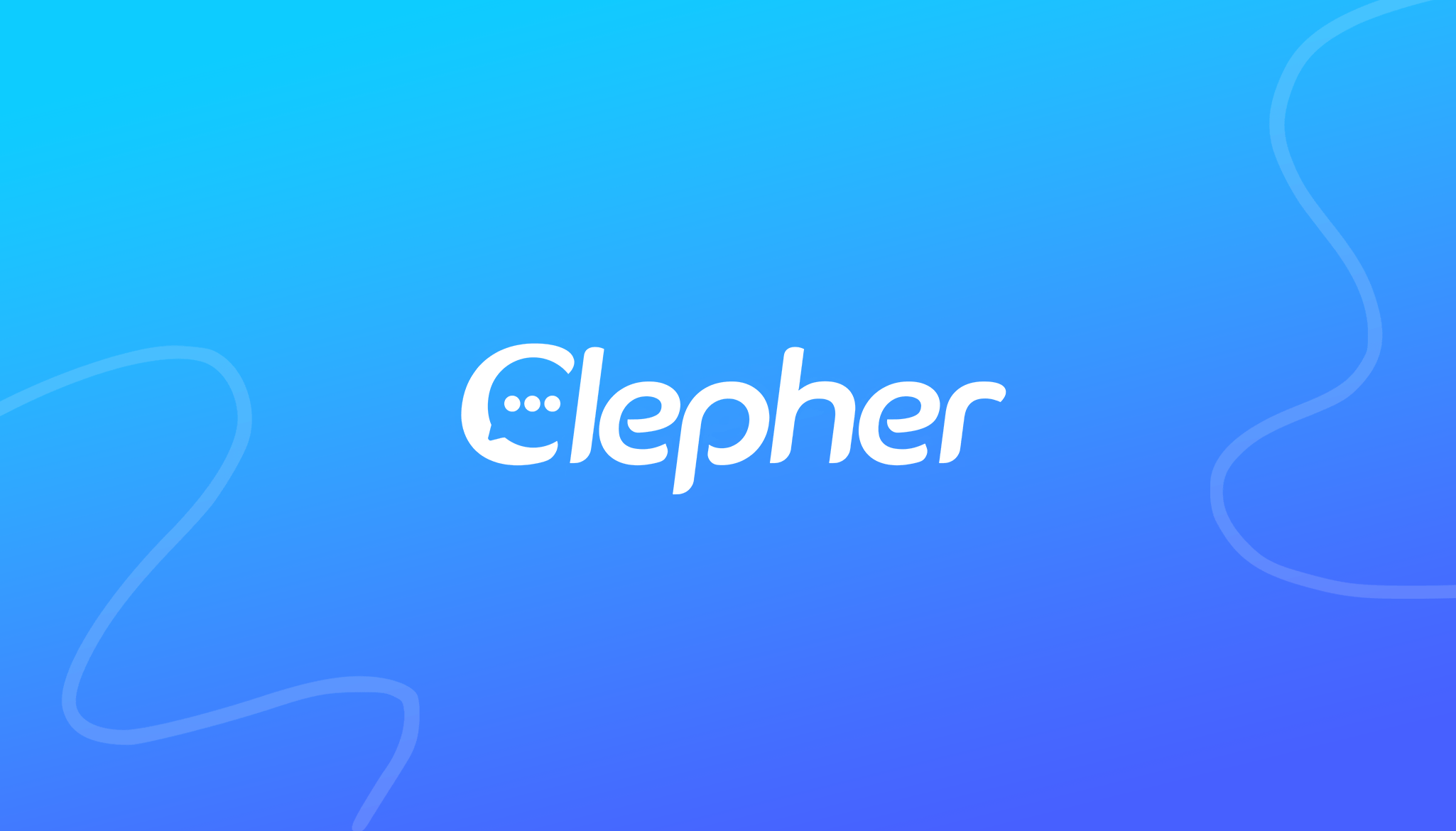Picture this: an employee who works 24/7, never takes a break, and instantly answers every customer question with perfect accuracy. That’s what a chatbot for a small business is. Forget the intimidating tech talk; this is a practical, powerful tool that lets you punch above your weight, offering big-company service without the big-company budget.
This guide will give you actionable steps to choose, build, and launch a chatbot that saves you time, captures more leads, and makes your customers happier.
Meet Your New 24/7 Team Member

chatbots 24/7
As a small business owner, you know that every missed call or slow email reply is a potential lost sale. You can’t be everywhere at once, but your customers expect instant answers.
This is where a chatbot steps in. It’s not a cold robot; it’s an automated assistant powered by conversational AI that flawlessly handles repetitive tasks, freeing you and your team to focus on growing the business.
And this isn’t just for mega-corporations. The market’s explosive growth tells the story. What was a $2.47 billion global market in 2021 is projected to hit over $15.57 billion in 2025. This shows how essential—and accessible—the best chatbot tools have become for businesses of all sizes and industries.
How a Chatbot Immediately Impacts Your Business
The value of a chatbot isn’t something you wait months to see. It makes a difference right away by creating efficiency and making your customers’ journey smoother from their very first click.
Think of it as a force multiplier for your small team. By handing off routine queries, you unlock precious hours for tasks that need a human touch—like closing a big sale or handling a complex customer issue. And because every specific business has unique workflows and customer needs, the right chatbot can be tailored to deliver truly personalized interactions that enhance both service quality and conversion rates.
Here’s a practical look at the immediate boost a chatbot can provide:
| Business Area | Immediate Impact |
|---|---|
| Customer Support | Provides instant answers to FAQs, cutting down wait times and support tickets. |
| Lead Generation | Engages website visitors 24/7, qualifies leads, and books appointments while you sleep. |
| Sales Process | Guides potential customers to the right products and answers pre-sale questions on the spot. |
| Team Productivity | Frees your staff from repetitive tasks so they can focus on high-value, strategic work. |
Ultimately, a chatbot ensures your business is always “on.” It’s constantly working to build trust and keep customers happy, even when you’re off the clock. To see this in action, learn how to maximize customer support with customer service chatbots and discover just how powerful this can be.
What a Chatbot Actually Does for You
It’s one thing to know what chatbots are, but the real magic is in what they do. For a small business, a chatbot isn’t just a website widget—it’s a problem-solver that works around the clock to plug the most common gaps in your operations.
Think about the questions your team gets every day: “What are your hours?” “Do you ship to my area?” “How do I book an appointment?” Each one pulls someone away from more important work.
A chatbot acts as your first line of defense—a digital receptionist that handles these routine questions instantly. This frees up your team to tackle complex customer issues, close bigger deals, or focus on growth. For sales teams, that means more time spent building relationships and closing qualified leads instead of answering repetitive queries.
Turn Your Website Into a Lead Generation Machine
Your website is your digital storefront, but what happens when a potential customer shows up after hours? They look around, can’t find an answer, and leave—a potential lead, gone forever.
A chatbot transforms your site into an always-on lead capture tool. Built with modern chatbot software and powered by artificial intelligence, it can proactively greet visitors, ask qualifying questions, and grab their contact info before they disappear.
- For a local bakery: A chatbot can take custom cake orders, asking about flavors, sizes, and pickup dates, then send the details straight to the kitchen.
- For a consultant: It can pre-qualify leads by asking about their budget and project scope, then book a discovery call right on their calendar.
- For a real estate agent: A bot can answer questions about a property, get a visitor’s contact information, and schedule a viewing—turning late-night browsers into booked appointments.
The best AI chatbots don’t just automate conversations—they guide visitors naturally, mirroring real human dialogue and making every interaction feel personal and helpful.
Drastically Improve Your Operational Efficiency
Beyond customer conversations, chatbots are powerhouses for internal efficiency. They automate the repetitive tasks that drain your team’s energy.
By automating routine tasks, a chatbot doesn’t just answer questions; it creates time. For small teams, that extra time is your most valuable resource, allowing you to invest in activities that directly fuel growth.
To really grasp this, it helps to understand workflow automation. At their core, chatbots execute predefined workflows that move tasks along without manual intervention—like routing a support ticket or guiding a new customer through onboarding.
The result is a smoother, faster operation. Tasks that used to take minutes of manual work are done instantly. This reduces human error and ensures every customer interaction is consistent, efficient, and on-brand.
Provide Instant, 24/7 Customer Support
Today’s customers expect answers now. A delay of just a few minutes can mean the difference between a sale and a lost opportunity. A chatbot eliminates the waiting game.
While big companies have used this for years, there’s still a massive opportunity for small businesses. As of 2025, only about 16% of small businesses worldwide have adopted chatbots, compared to 24% of large enterprises. A well-designed, AI-powered chatbot can handle up to 80% of routine customer questions, taking a huge weight off your team.
This immediate support builds trust and shows customers you value their time—without requiring your sales team or support staff to be online 24/7.
Choosing the Right Chatbot for Your Needs
Picking the right chatbot is like hiring a new team member. Not every candidate is right for the job, and the wrong choice can create more headaches than it solves. The key is to focus on what your business actually needs.
The chatbot world is split into two camps: simple, script-following bots and more advanced, artificial intelligence-driven ones. Understanding the difference is your first step to finding the perfect fit.
If your goal is to enhance efficiency, streamline customer interactions, and give your sales teams more leverage, investing in the best AI chatbot software will help you get there faster. This decision tree can help you see which path makes the most sense for the problems you’re facing right now.

business problems
As the graphic shows, your main challenge—whether it’s losing leads or stretching your team too thin—should point you toward a solution that delivers a clear, measurable result.
Rule-Based Bots: The Dependable Script-Follower
A rule-based chatbot works like an interactive flowchart. It follows a strict script you create, guiding users with buttons or basic keywords. Think of it as a decision tree brought to life.
These bots are fantastic for simple, predictable tasks. They’re also generally cheaper and faster to set up, making them a great solution for small teams or startups that need quick automation without heavy setup costs.
Best for: Answering FAQs, booking appointments, or gathering basic lead info.
Example: A local restaurant uses a rule-based bot. A customer clicks “See Menu,” then “Desserts,” and the bot displays the dessert menu. It’s simple, effective, and error-proof.
Their biggest strength is also their weakness. If a customer asks a question that isn’t on the script, the bot gets stuck and gives a frustrating “I don’t understand” response.
AI Chatbots: The Smart Problem-Solver
An AI chatbot is like a new hire who learns on the job. Powered by technologies like Natural Language Processing (NLP), these bots understand the intent behind a user’s question—even with typos or slang.
They don’t just stick to a script; they understand context and can handle a much wider range of conversations. While they require more initial investment, their flexibility is a game-changer.
For growing companies, AI-powered chatbots for small businesses deliver more than automation—they deliver intelligence. It adapts to unique customer needs, scales effortlessly, and provides consistent, 24/7 support without overwhelming your team.
Best for: Handling complex support issues, giving personalized product recommendations, and managing detailed sales conversations.
Example: An e-commerce store uses an AI bot. A customer types, “my order hasn’t arrived yet,” and the bot understands. It asks for the order number, checks the shipping system, and provides a real-time status update.
If you want to go deeper, you can explore the different types of chatbots to see which model aligns with your goals.
Choosing between a rule-based and an AI chatbot isn’t about which one is “better.” It’s about which one is right for the job. Start with the problem you need to solve, then pick the tool that fixes it.
Rule-Based vs. AI Chatbots: Which Is Best for You?
Still weighing your options? This table breaks down the core differences to help you decide which technology fits your immediate needs, team capacity, and budget.
| Feature | Rule-Based Chatbot | AI Chatbot |
|---|---|---|
| Conversation Style | Follows a strict, pre-defined script (decision tree). | Understands intent and context; handles natural language. |
| Best For | Simple, repetitive tasks like FAQs and appointment booking. | Complex queries, personalized support, and sales. |
| Flexibility | Limited. Fails if the user goes “off-script.” | Highly flexible. Can adapt to unexpected questions. |
| Setup & Cost | Lower cost, faster and easier to set up. | Higher initial investment and requires more training. |
| “Intelligence” | Not intelligent. Recognizes keywords and follows rules. | Learns from conversations and improves over time. |
For a small business just starting, a rule-based bot is often the perfect, low-risk way to automate simple tasks. But if you’re dealing with a high volume of complex customer issues, investing in an AI chatbot will pay for itself in the long run.
Key Features Every Small Business Should Look For
Once you’ve settled on the type of bot, it’s time to look at specific platforms. While checking out solutions like Clepher, make sure any tool you consider has these non-negotiable features.
- Seamless Integrations: Your chatbot must connect with the tools you already use, like your CRM, email software, or e-commerce platform. This turns a chat lead into a new contact in your sales pipeline without any manual work.
- Easy Customization: The bot needs to feel like part of your brand. Look for a platform that lets you quickly change its colors, logo, and tone of voice. A chatbot for a law firm should sound different from one for a quirky gift shop.
- Clear Analytics: How do you know if your chatbot is working? You need data. Your platform should provide simple reports on conversation volume, user satisfaction, and lead conversions. This is how you’ll figure out what’s working and what’s not.
- Human Handoff: No bot can solve everything. A must-have feature is the ability to seamlessly pass a conversation to a real person when things get tricky. This ensures your customers never get stuck in a frustrating loop.
Real-World Examples of Chatbots in Action
Theory is great, but seeing how something works in the real world makes it click. Let’s look at how small businesses are using chatbots to solve actual problems, save time, and boost their bottom line.
These aren’t massive corporations. They’re small operations, like yours, that found a smart way to automate and grow. Each story follows a simple formula: a common business headache, a practical chatbot fix, and tangible results.
The Real Estate Agent Who Never Misses a Lead
A local real estate agent was losing clients. Leads from her website came in late at night, and by the time she followed up the next business day, they had already found someone else.
The Problem: Delayed responses meant lost opportunities. She needed to engage potential buyers and sellers the moment they showed interest—24/7.
The Chatbot Solution: She set up a simple chatbot with her website and Facebook page to do three key things:
- Answer Quick Questions: Instantly share property details like square footage, price, and local school districts.
- Qualify Leads: Ask direct questions like “Are you looking to buy or sell?” and “What’s your budget?” to identify serious prospects.
- Schedule Viewings: The bot connected to her calendar, allowing qualified leads to book a property tour right in the chat window.
By leveraging a generative AI powered chatbot, she gave her business a human-like assistant that could personalize replies based on customer intent. This transformed her website from a static brochure into an active, round-the-clock lead generation machine.
The E-commerce Brand That Automated Returns
An online jewelry store owner was drowning in customer support. She spent hours every day answering the same questions: “Where’s my order?” “How do I make a return?”
The Problem: Repetitive support tickets were eating up time that should have gone into creating products and marketing her business.
The Chatbot Solution: She deployed an intelligent chatbot built on an AI model trained to recognize and respond to common customer service issues. The chatbot integrated seamlessly with her website, order management system, and email, allowing it to:
- Track orders and provide real-time shipping updates.
- Walk customers through the return process automatically.
- Escalate complex cases to a human only when necessary.
Within weeks, she reduced her daily support load by more than 60%. Customers received instant answers, and she regained hours each day to focus on growth and new product launches.
The Chatbot Solution: She added a chatbot to her Shopify store focused on post-purchase support. Now, when a customer opens the chat, they see options like “Track My Order” or “Start a Return.”
By automating these common, time-sucking tasks, the owner reclaimed an estimated 8-10 hours per week. That’s time she now puts directly into growing the business, not just running it.
The bot asks for an order number, gets a live shipping update, or walks a customer through the return process. For anything more complex, it gathers the customer’s info and creates a support ticket for her to handle later.
The Service Business That Streamlined Client Intake
A small marketing agency’s client intake process was a slow, inconsistent mess. The team was manually sending questionnaires and follow-up emails just to get basic project details.
The Problem: The manual onboarding process was a major bottleneck, delaying projects and creating a poor first impression.
The Chatbot Solution: The agency built an intake chatbot to act as a “digital project manager” for new clients. Here’s how it works:
- Welcome and Qualify: When a new lead fills out a form, the bot greets them and asks about their goals, budget, and timeline.
- Gather Key Info: It collects all essentials needed for a project brief, like website URLs or social media handles.
- Book a Kickoff Call: Once the information is gathered, the bot shows the agency’s calendar and lets the new client book their kickoff meeting on the spot.
This single automation streamlined their entire process, ensuring every client provided critical information in a structured way and getting projects off the ground much faster.
Your Step-by-Step Chatbot Launch Plan

chatbot launch plan
You’ve seen what chatbots can do. Now it’s time to bring one to life. This isn’t about getting tangled in code; it’s about a clear plan to make your new assistant an asset from day one. Think of this as your blueprint for a successful launch.
Step 1: Define Your Primary Goal
Before you do anything else, decide on your bot’s number one job. A chatbot that tries to do everything will accomplish nothing. Your goal must be specific, measurable, and focused on solving one high-impact business problem.
What’s your biggest headache? Answering the same questions all day? Losing leads after hours?
Here are a few focused goals to get you thinking:
- Reduce support tickets: The bot will handle the top 10 FAQs, aiming to cut support emails by 30%.
- Increase lead generation: The bot will capture contact info from 15% of visitors who engage with it.
- Automate appointment booking: The goal is to get five qualified sales calls scheduled each week through the chatbot, with no human intervention.
If you’re just starting out, look for the best chatbots for small businesses that offer templates and analytics to make setup easier. Pick one clear goal to start — you can always expand later. A focused launch is the key to getting early wins when using a chatbot strategically.
Step 2: Map the Conversation Flow
With a clear goal, you can design the conversation. A great chatbot for customer experience feels less like an interrogation and more like a helpful, guided interaction. Anticipate what your users need and make it effortless for them to get it.
Grab a whiteboard and sketch out a simple flowchart. What’s the ideal path a user takes to solve their problem? Think through the questions they’ll ask and the options you need to provide at each step.
Your chatbot’s personality is a direct extension of your brand. It’s not about tricking users into thinking they’re chatting with a person—it’s about creating a consistent, enjoyable brand experience.
Now, give your bot a personality. Should it be professional? Friendly and casual? A little quirky? This tone must align with your brand and resonate with your audience.
Step 3: Train and Test Your Chatbot
This is the most critical step. A chatbot is only as smart as the information you give it. For an AI-powered chatbot, this means feeding it your FAQ pages, product data, and customer service scripts. For a rule-based bot, it means carefully scripting every conversational path.
Once it has its “brains,” the testing begins. Don’t just test the “happy path” where a user follows instructions perfectly—try to break it. This is where the advanced AI capabilities of modern bots shine, as they can learn from mistakes and adapt to new inputs over time.
Critical Testing Scenarios:
- Ask unexpected questions: See what happens when you go off-topic. Does it gracefully admit it doesn’t know and offer to connect you to a human?
- Use slang and typos: Real people don’t use perfect grammar. Test how well the bot understands and corrects these.
- Test the human handoff: Intentionally go down a path that requires real assistance. Is the transition smooth? Does your team get notified instantly?
Thorough testing ensures your chatbot feels natural, helpful, and reliable from day one—building confidence for both your customers and your team.
Get a few team members or trusted customers to play around with the bot before it goes live. Their feedback is gold. For a deeper dive, our guide on how to build a chatbot offers more detailed tips on perfecting these pre-launch steps.
Step 4: Promote and Analyze Performance
Congratulations, your chatbot is live! But the work isn’t over. Now you have to let people know it exists and track data to see if it’s hitting your goal.
Make your bot easy to find with a visible chat widget. Promote it in your newsletter or on social media, highlighting how it offers instant 24/7 answers.
Finally, get comfortable with the analytics dashboard. Keep a close eye on:
- Conversation Volume: How many people are using it?
- Goal Completion Rate: What percentage of users are successfully booking a meeting or getting their question answered?
- Fall-Back Rate: How often does the bot say, “I don’t understand”? If this is high, you need to add more training data.
Use this data to make continuous improvements. A chatbot is a dynamic member of your team that gets smarter with a little coaching.
Jumping into new tech brings up a lot of “what ifs.” Let’s tackle the most common questions from business owners just like you. These are the straight answers you need to make a smart, confident decision.
Aren’t Chatbots Too Expensive for a Small Business?
Not anymore. A few years ago, maybe. But today, the market is full of affordable, subscription-based tools built for small businesses. You can get a powerful chatbot for your website or even integrate it directly into popular messaging platforms like Facebook Messenger or WhatsApp—all for a low monthly fee.
Think of it as an investment, not an expense. If a chatbot saves your team five hours a week on repetitive questions or captures a few extra leads you would have missed, it pays for itself almost immediately.
Even advanced chatbots—once reserved for enterprise budgets—are now within reach for small business owners thanks to scalable, cloud-based pricing and plug-and-play integrations.
Will a Chatbot Make My Brand Feel Robotic and Impersonal?
This is a valid concern. The truth is, a well-designed chatbot makes your customer experience better, not more robotic. The goal isn’t to trick people into thinking they’re chatting with a person—it’s about giving them instant, accurate help when they need it most.
The best customer support chatbots, powered by AI, can recognize intent, understand tone, and respond naturally—creating smooth, friendly interactions that feel authentic to your brand.
A great chatbot is an extension of your company’s voice. You get to program its tone—whether professional, casual, or a little quirky—so it fits right in with how your brand communicates.
For anything complex or sensitive, the bot should seamlessly hand the conversation over to a real person. This frees up your team to provide amazing, high-touch support where it really counts.
Do I Need to Know How to Code to Set One Up?
In most cases, absolutely not. The rise of no-code chatbot builders and visual editors has made creating bots easier than ever. These tools use drag-and-drop interfaces and prebuilt templates that make it simple to build and launch even advanced chatbots without writing a single line of code.
If you can map out a simple flowchart or fill out an online form, you already have all the technical skills you need to set up a chatbot with your website or link it to your favorite messaging platforms.
How Do I Even Know if It’s Actually Working?
Modern AI-powered chatbot platforms don’t leave you guessing. They come with built-in analytics dashboards that show exactly what’s happening in real time.
You can easily track key metrics that tie directly to your business goals:
- Conversation Volume: See how many customers your bot is engaging with.
- Lead Capture Rates: Track how many new leads it’s adding to your sales pipeline.
- Customer Satisfaction Scores: Measure how happy users are with your automated help.
- Most Asked Questions: Discover what your customers really want to know—helping you improve your bot, your website, and even your products.
These insights show you precisely where your customer support chatbots are making an impact and where they can improve, ensuring your automation always drives real, measurable results.
Conclusion
In conclusion, a chatbot for small businesses can significantly enhance customer experience and satisfaction by providing reliable customer support across multiple channels, including WhatsApp and social media platforms. These AI chat solutions are designed to understand and respond to user inputs, effectively handling common inquiries and responses to customer queries.
By utilizing a knowledge base, chatbots can create personalized interactions tailored to specific business needs. Many chatbots offer integrations with popular tools, allowing for seamless email marketing and analytics, and reporting features. With options for a free trial, small businesses can implement these powerful tools without any coding, boosting their marketing efforts and efficiency.
Ready to put these answers into action? Clepher gives you an intuitive, no-code platform to build AI-powered chatbots for your website, Messenger, and Instagram. Start turning conversations into conversions today. Get started with Clepher.
Related Posts



